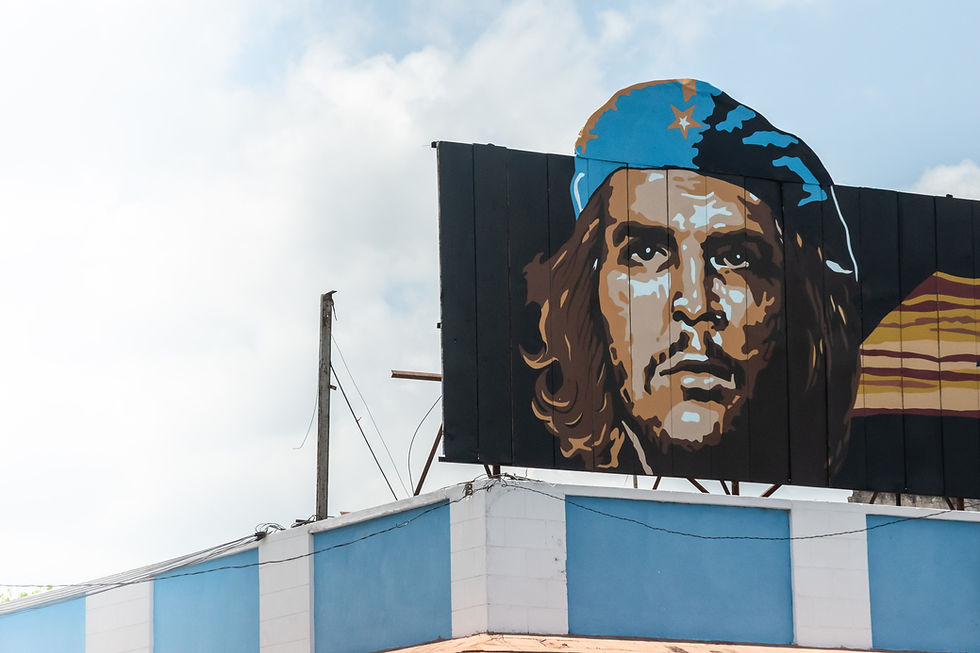
Deep-lomacy #12
Cuba’s Best Seller – Che Guevara, Cultural Diplomacy, and the Commodification of the Cuban Revolution
Cuba’s Best Seller – Che Guevara, Cultural Diplomacy, and the Commodification of the Cuban Revolution \ Maayan Padan, Junior Staff member in the Gender Program in Ben-Gurion University of the Negev and the head of the Beer Sheva unit in Rothschild Ambassadors Program
Cuba is a fascinating country, mostly thanks to its persistence to maintain a 20th century-style communist regime. This attribute characterizes most of what can be argued to be Cuban cultural diplomacy. Whether it’s the Cuban medical internationalism, which was demonstrated in its enormous extent once again as the COVID-19 pandemic broke; whether it’s the island’s unique music genres and artists; whether it’s the infamous embargo of the island by its great neighbor in the north, its careful opening, and re-isolation by a president who seems to have a personal vendetta against Spanish-speaking countries – nothing represents the Cuban island and escapes the grinding teeth of the government and the party. Well, nothing but one Argentinian doctor, who went by the name of Che Guevara.
Arguably, very few people in the west have never heard of Che Guevara. His face is printed on T-shirts, ashtrays, cigarette-lighters, bags, and many other commodities made in the sweatshops of south-east Asia. His portrayal by Gael Garcia-Bernal in The Motorcycle Diaries (2004) stroke yet another generation with the cultivating myth of Guevara. But what made Guevara, an Argentinian med student with Latino-communist affiliations, a Cuban symbol? First and foremost, Guevara himself. Upon joining the Cuban rebels in Mexico City, Guevara assumed a Cuban accent and Caribbean manners, which assisted in positioning him as one of the Castro brothers’ confidants. Later, as the Guerilla army struggled to conquer Cuba from Batista, Guevara made sure the revolutionary message will be heard, by operating a pirate radio station from the Sierra Maestra mountains, where the army took cover before, during, and after its attacks on Batista’s soldiers. Upon the victory of the revolutionary army in January 1959, Guevara marched as the liberating commander of Santa Clara to Havana. There he was crowned as a Cuban hero, and there he was accepted as one.
The crowning was completed by the European left, who grew tired of the weary reformists of the continent’s socialist and communist parties and pinned its hopes in leaders who evolved from peripheral countries. Che provided them with a lot more than they ever dreamed of: starting in Cuba, moving to North Africa and then to Congo, and popping up in Bolivia, only to find his death under the command of a Cuban exile turned CIA agent. His iconic picture was printed and distributed around the same time he was executed, a fact that further extended his status as a Marxist martyr, and as a symbol of courage and youth. But as history would have it, the time of Guevara’s execution and of the picture’s distribution, juxtaposed with a rise in political protests all over the world, and especially in the western hemisphere - 1960. As political protests became the defining characteristic of the Zeit Geist, posters became an extremely popular tool to convey messages and recruit more and more supporters. In short, that is how Che Guevara became an icon. And just like other political icons, soon enough, Guevara was commodified into a status-symbol of youth and rebellious, that has nothing to do with communism, revolution, or working-class struggle.
This could have been a sad, cynical story, about how Capitalism defeated communism once again, if it were not for Guevara’s commodification that assisted 1990s Cuba, which struggled to stabilize its economy independently for the first time in 30 years, in rebranding itself as a Caribbean heaven frozen in time. Just like Guevara’s face, the Cuban island enjoys branding of a place time stands still in. This enables Cuba to leverage its shortcomings, mostly caused by the embargo, to become touristic assets, which in their turn, pump foreign currency in to the country, and maintain, despite numerous difficulties, a second-world regime, independent from Soviet investments.
This is a partial explanation to Cuban economic stability, as it is to Cuban cultural diplomacy. Both are intertwined and rely on the Medical Internationalism mentioned here. Also, a lot has changed since Fidel Castro died in 2016, and since Raul Castro resigned in 2018.
For further reading, please see:
Castaneda, G Jorge. 1997. Companero: The Life and Death of Che Guevara. New York: Vintage.
Eaken, Ken. Suchlicki, Jaime. Clerc, Jean-Pierre. 2016. The Cuba Libre Story: https://www.imdb.com/title/tt6335696/?ref_=nv_sr_srsg_0
Gonzales, Mike. 2004. Che Guevara and the Cuban Revolution. Sydney: Bookmarks.
Klein, Naomi. 1999. No Logo. Random House of Canada.
Lopez, Luis. Ziff, Trisha. 2008. Chevolution: https://www.imdb.com/title/tt1202160/?ref_=fn_al_tt_1
Sinclair, Andrew. 2006. Viva Che! The Strange Death and Life of Che Guevara. Sparkfold: Sutton.

